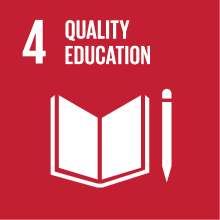HISTORY OF THE ANCIENT NEAR EAST II
- Academic year
- 2025/2026 Syllabus of previous years
- Official course title
- STORIA DEL VICINO ORIENTE ANTICO II
- Course code
- FT0203 (AF:448163 AR:328596)
- Teaching language
- Italian
- Modality
- On campus classes
- ECTS credits
- 6
- Degree level
- Bachelor's Degree Programme
- Academic Discipline
- L-OR/01
- Period
- 4th Term
- Course year
- 3
- Where
- VENEZIA
Contribution of the course to the overall degree programme goals
1) CONSERVATION AND MANAGEMENT OF CULTURAL HERITAGE AND ACTIVITIES [FT1]: The course is among the core educational activities of the Archaeology curriculum. The 12-credit exam consists of two 6 CFU modules, namely: HISTORY OF THE ANCIENT NEAR EAST I (6 out of 12 CFU) [FT0201] + HISTORY OF THE ANCIENT NEAR EAST II (6 out of 12 CFU) [FT0201]
2) HUMANITIES [FT3]: The course (6 CFU) is among the related and supplementary educational activities of the Ancient Studies curriculum.
3) HISTORY [FT5]: The course is among the related and supplementary educational activities of the Ancient and Medieval Mediterranean History curriculum.
Expected learning outcomes
By the end of the course, the student will have acquired in-depth knowledge of the sources and research methodology used to study Near Eastern sources of historical interest. In particular, the student will be able to:
- Understand the main characteristics of historiography in the Ancient Near East and its development from the mid-third to the first millennium BCE;
- Analyze historiographical texts and commemorative inscriptions within their political, social, and ideological contexts;
- Distinguish the different forms of historical narration (chronicles, annals, synchronic and diachronic lists, etc.) and their functions;
- Apply a critical approach to primary sources.
Additionally, the student will be informed about the current state of research and reference bibliography and will become familiar with the available digital resources. Furthermore, the course aims to ensure that the student:
a) Practices discussing historical topics to strengthen critical thinking skills;
b) Learns to collect, analyze, and organize documentation for research purposes;
c) Develops the ability to formulate questions regarding the nature and reliability of sources.
Pre-requirements
Contents
The course provides an introduction to the historiography of the Ancient Near East and its various historical manifestations, attested from the mid-third to the end of the first millennium BCE. Particular attention will be given to the following topics: the definition of the historiographical genre in its various meanings; the distinctive characteristics of Near Eastern historiography compared to that of classical and modern cultures; the typology of sources (chronicles, annals, royal inscriptions, commemorative texts, dynastic lists); traditions and ideological developments in relation to time and space; the role of historical memory in the narration of power and dynastic legitimacy; the boundaries between mythological narratives and event-based history; and textual criticism tools for historical reconstruction.
Referral texts
- Abusch T. et alii (eds.), 2001, Historiography in the cuneiform world. Proceedings of the 45. Rencontre Assyriologique Internationale. Bethesda : CDL.
- Selected royal inscriptions from the Royal Inscriptions of Mesopotamia series.
Assessment methods
Type of exam
Grading scale
- Understanding and knowledge of course content (max 18 points out of 30, 60% of the total)
- Critical analysis of sources (max 6 points out of 30, 20% of the total)
- Clear and coherent exposition (max 6 points out of 30, 20% of the total)
Grading Scale:
30 with honors – Outstanding: in-depth and comprehensive knowledge of the topics, strong critical analysis and historical contextualization, clear, precise, and well-structured exposition.
28-30 – Excellent: solid preparation, good ability to synthesize and analyze, correct exposition with only a few minor inaccuracies.
25-27 – Good: adequate knowledge of the topics, clear exposition but with some uncertainties or minor gaps.
21-24 – Satisfactory: general understanding of the topics covered, with some inaccuracies and difficulties in argumentation.
18-20 – Sufficient: basic knowledge of the topics, simple exposition with several gaps and limited critical ability.
<18 – Insufficient: inadequate knowledge, difficulties in argumentation and exposition, inability to contextualize the topics discussed.
Students are encouraged to actively participate in discussions on the topics covered, including by asking questions that contribute to a better understanding of the course content.
Teaching methods
2030 Agenda for Sustainable Development Goals
This subject deals with topics related to the macro-area "Human capital, health, education" and contributes to the achievement of one or more goals of U. N. Agenda for Sustainable Development


